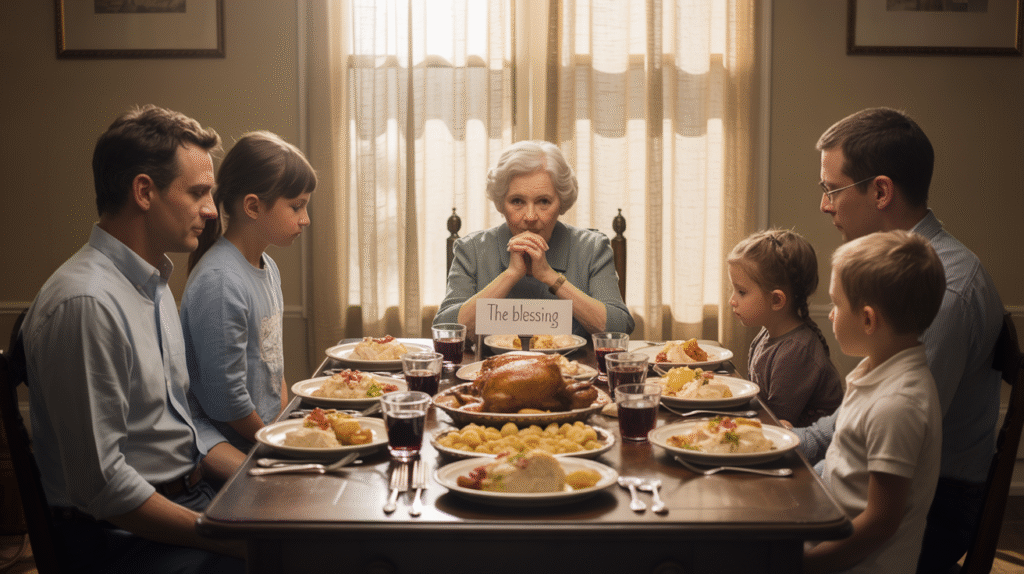
Ever wondered why your little one begs for “just one more story” at bedtime? It’s not a delay tactic (okay, maybe sometimes it is). Those precious reading moments are literally rewiring their brain for success.
When you crack open a book before lights-out, you’re not just building memories—you’re building neural pathways. Bedtime stories boost your child’s brain development in ways that daytime activities simply can’t match.
Science shows that the sleepy, receptive state before slumber creates the perfect conditions for language acquisition, emotional processing, and creative thinking. Parents who make bedtime reading a non-negotiable ritual are secretly giving their kids a massive developmental advantage.
But here’s what most parents get completely wrong about bedtime stories…
The Science Behind Bedtime Stories

How listening activates multiple brain regions
When your child listens to a bedtime story, their brain lights up like a Christmas tree. It’s not just one part working—it’s a full mental workout. The auditory cortex processes your voice while the visual cortex creates images from your words. Meanwhile, the language areas (Broca’s and Wernicke’s) decode meaning and grammar.
Brain scans show that stories activate the same neural networks used for real experiences. When you read about a character running, your child’s motor cortex gets involved. Pretty amazing, right?
Language development and vocabulary expansion
Bedtime stories introduce kids to words they’d never hear in everyday conversation. Research shows that children who are read to regularly encounter 1.4 million more words by kindergarten than those who aren’t.
But it’s not just about word count. Stories provide context that helps kids understand new concepts. When you read “the enormous elephant trumpeted loudly,” your child grasps both size and sound together.
Children learn grammar patterns through stories without formal lessons. They absorb proper sentence structure naturally—much easier than memorizing rules.
Neural pathways strengthened through narrative exposure
Each time you read a story, you’re helping build superhighways in your child’s brain. Repeated exposure to narratives creates stronger neural connections, particularly in areas responsible for:
- Memory formation
- Emotional processing
- Cause-and-effect understanding
- Sequential thinking
These pathways develop fastest during early childhood. A consistent bedtime story routine maximizes this critical window of brain development.
Cognitive Benefits for Growing Minds

Enhanced memory and recall abilities
When your little one begs for “just one more story,” they’re actually setting themselves up for better memory development. Stories follow patterns and sequences that help kids develop their recall skills naturally. Kids who hear bedtime stories regularly show impressive abilities to remember details, characters, and plot points.
Think about it. Your child often remembers exactly where you left off in a story or catches you when you try to skip a page. That’s their memory muscles flexing! Each time they predict what comes next or recall what happened previously, they’re strengthening neural pathways essential for memory formation.
Improved attention span and focus
In our world of constant notifications and quick-cut videos, bedtime stories are a focus superpower. Children develop longer attention spans when they get pulled into a good story night after night.
Unlike the passive experience of watching TV, stories engage kids actively. They need to visualize characters, imagine settings, and track plot developments. This mental workout builds their concentration skills that carry over to classroom learning and daily tasks.
Better problem-solving skills
Stories are full of challenges and resolutions. When kids follow characters through obstacles, they’re actually rehearsing problem-solving in their minds.
Good stories present:
- Characters facing difficulties
- Different approaches to challenges
- Consequences of various solutions
Stronger analytical thinking development
The questions kids ask during story time reveal deep analytical thinking: “Why did the character do that?” or “What would happen if…?”
When you pause to discuss these questions, you’re helping your child develop critical thinking skills that will serve them throughout life. They learn to look beyond the surface, make connections between events, and understand cause and effect relationships.
Emotional Intelligence Through Storytelling

Understanding different perspectives and emotions
When your child listens to a story about a sad dragon or a frustrated princess, they’re actually learning something incredible—they’re discovering that other beings have feelings too. Stories expose kids to characters experiencing joy, fear, anger, and disappointment, often in situations very different from their own daily lives.
Ever noticed how your little one’s eyes widen when the character in the story feels scared? That’s their brain making connections! Through bedtime stories, children encounter emotions in a safe context before they might experience them in real life.
Developing empathy and compassion
Stories are like empathy training wheels. When your child worries about the lost bunny or celebrates when friends reunite, they’re practicing caring about others’ feelings.
This emotional workout happens night after night. A child who regularly hears stories develops a rich emotional vocabulary and learns to recognize feelings in others—a superpower that will help them navigate friendships, school, and eventually, adult relationships.
Building emotional regulation skills
That moment when the character takes a deep breath instead of yelling? Pure gold for teaching emotional regulation.
Stories provide models for handling big feelings. They show children that emotions come and go, and that there are healthy ways to express them. This nighttime learning translates to daytime skills when your child faces their own frustrations.
Creating safe spaces to explore difficult feelings
Some emotions are tough to talk about directly. Stories create distance that makes discussing scary or confusing feelings easier.
“Remember how Max felt when he had to leave the Wild Things?” becomes a gateway to talking about your child’s own separation anxiety or fears.
Strengthening parent-child bonds
Those quiet moments, snuggled together with a book, create a consistent connection that goes beyond the story itself. Your voice becomes associated with comfort and security. The physical closeness, shared experience, and undivided attention strengthen your relationship in profound ways.
The discussions that naturally emerge from stories—”What would you do if you were that character?”—build trust and openness that extends beyond bedtime.
Language Development Superpowers

Expanding vocabulary beyond everyday conversation
Ever noticed how children who hear bedtime stories speak differently? That’s not just coincidence. When you read to your child at night, you’re exposing them to words they’d never hear during dinnertime conversation or playground chatter.
Most of our daily talk with kids involves simple directions: “Put on your shoes” or “Time for lunch.” But stories? They’re packed with words like “magnificent,” “treacherous,” or “extraordinary” – words that paint vivid pictures and stretch young minds.
A 4-year-old who gets regular bedtime stories typically knows about 1,600 more words than one who doesn’t. These aren’t just fancy words they parrot back – they become tools your child can actually use to express themselves better.
Mastering complex sentence structures
Bedtime stories do something magical to your child’s grasp of language. They introduce sentences that twist, turn, and connect in ways everyday talk rarely does.
Think about it. When we speak to kids, we keep things simple: “Eat your dinner.” But in stories, they hear things like: “Although the dragon was fierce, the brave knight wasn’t afraid because of the magic shield he carried.”
Your child’s brain soaks up these patterns. Soon enough, they move from “I saw a dog” to “I saw a spotted dog running through the park while chasing a squirrel.” This doesn’t happen by accident – it’s the direct result of hearing rich language night after night.
Understanding narrative flow and sequencing
Kids who get regular stories grasp something crucial – that events happen in order and actions have consequences. This understanding of “what happens next” is a brain superpower.
When your child follows along as the three little pigs build their houses one by one, they’re learning that stories have beginning, middle, and end parts. They’re picking up that one thing leads to another.
This sequencing skill doesn’t just help them tell better stories themselves – it becomes the foundation for understanding cause and effect in science, following multi-step directions, and organizing their thoughts logically in school.
The best part? This brain workout happens while they’re snuggled up with you, completely unaware they’re building critical thinking skills between giggles and gasps.
Creating Lifelong Readers

A. Building positive associations with reading
Bedtime stories aren’t just about getting kids to sleep—they’re creating memories your child will carry forever. When you snuggle up with a good book, your little one connects reading with comfort, security, and your undivided attention.
Think about it: would you keep doing something that feels like a chore? Neither will your kids! Make story time the highlight of their day by using silly voices, asking questions, and letting them choose books sometimes. When reading feels like a treat rather than a task, they’ll reach for books on their own.
B. Establishing consistent reading habits early
Consistency is key. Kids thrive on routines, and making books a non-negotiable part of bedtime plants the seeds for lifelong reading.
Start with just 10 minutes a night. Even on those evenings when you’re exhausted and tempted to skip, remember that those few minutes build powerful neural pathways in your child’s developing brain.
C. Transitioning from passive listener to active reader
Watch the magic happen as your child transforms from listener to storyteller! Encourage this journey by:
- Pointing to words as you read them
- Asking “what happens next?” questions
- Having them “read” to you using picture clues
- Celebrating when they recognize words
Soon they’ll be finishing sentences in familiar books, then reading simple words, and before you know it, reading to you!
D. Setting the foundation for academic success
Kids who grow up with bedtime stories enter school with a serious advantage. They’ve already developed crucial pre-reading skills without even realizing it.

Bedtime stories aren’t just a pleasant nighttime ritual—they’re powerful brain-building tools for your child. From enhancing cognitive abilities and fostering emotional intelligence to supercharging language skills, the simple act of reading together before sleep creates neural connections that benefit your child for years to come. The research is clear: children who regularly experience bedtime stories show improved vocabulary, better comprehension, and stronger bonds with their caregivers.
Make storytime a non-negotiable part of your nightly routine. Whether you have 10 minutes or 30, these precious moments of connection are laying the foundation for your child to become not just a capable reader, but a lifelong lover of books. Your voice, the turning pages, and the worlds you explore together are literally shaping your child’s developing brain—one story at a time.




